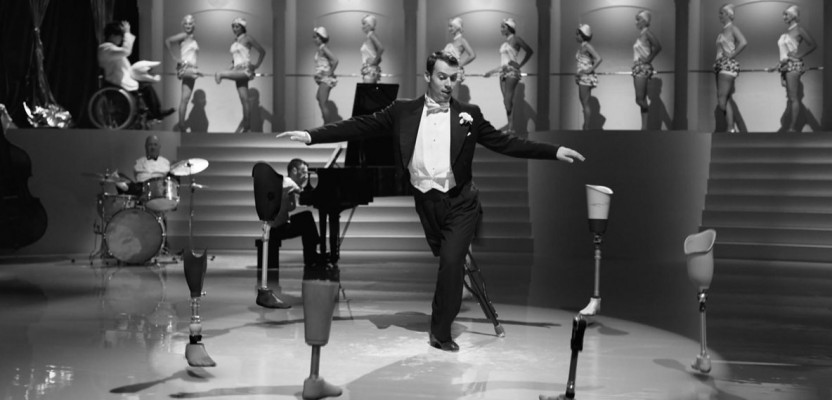Whilst 2016 has been something of a banner year for many horrible things, it's been business as usual in advertising, and business navigating new frontiers. One thing that appears to have come to the forefront this year is the coming together of traditional and digital advertising, with a slew of campaigns that didn't just contain traditional and digital elements, but blended the elements to create true integrated campaigns.
One of the campaigns that underlined this seamless integration and seemed to generate the most enthusiasm this year (with good reason) was the Channel 4 Superhumans Wanted campaign, which offered £1 million worth of commercial airtime to an advertiser prominently featuring disability in its adverts. This was part of a wider “Superhumans” campaign from the channel's in-house team at 4Creative, which ran prior to and throughout the Rio 2016 Paralympic Games. Honestly, I would have featured it as one of my own favourites, had my interviewees not expressed similarly ecstatic views.
So, below I've collected a trio of my own personal favourite campaigns of the year, which might not have gathered as many column inches as some other campaigns. These are, however, some of the campaigns I personally feel best sum up 2016 and best underline a couple of the major trends that have carried it. Further on, I've also spoken to a number of industry experts, who have offered their own opinions on the year in ad land. You'll find some quite fascinating and diverse insights, and perhaps even discover a few campaigns you missed out on. If there are any exceptional pieces of work you think I might have overlooked, please feel free to contribute in the comments below.
Plume Labs “Pigeon Air Patrol” by DigitasLBi
Anyone who has ever spent any amount of time in London would struggle to ascertain where it got its nickname from, as “The Big Smoke” is one of the most heavily polluted major cities in Europe. One particularly green-fingered tech company, however, struck back against the air pollution problem plaguing the capital with a fleet of high tech pigeons. The concept was created by Plume Labs; a technology company that helps consumers track and reduce their exposure to air pollution, and it's set to launch the first ever flock of pollution-monitoring pigeons across London this week. The initiative was created in partnership with DigitasLBi with support from industry partners at Twitter, and aimed to raise awareness of air pollution in the city. Over the course of three days in March, Plume Labs and DigitasLBi released ten pigeons wearing small pollution-monitoring backpacks. Lightweight pollution sensors, created by the company, were stitched onto small fabric vests which fitted comfortably on the pigeons and measured levels of nitrogen dioxide and ozone, the main gases behind harmful urban air pollution. The Pigeon Air Patrol monitored air quality in the capital and reported back via Twitter. Londoners tweeted their location to the handle @PigeonAir to receive an instant response from one of the pigeons (named Coco, Julius and Norbert), informing them about the level of pollution in their area. Recipients were also invited to visit the Pigeon Air Patrol microsite, where they could view a live map of the pigeons’ flights, learn about air pollution and its health risks, find out more about the pigeons themselves (their turn-ons and turn-offs) and download the Plume Air mobile app, which acted as an urban weather report that provides its users with timely, accurate, and actionable information on live and predictive air pollution levels in their city, helping make the air we breathe more transparent. Genuinely unique.
“Air pollution isn’t sexy and people don’t engage with it. So the heart of our idea was to make air pollution more accessible and relevant” Pierre Duquesnoy, Creative Director at DigitasLBi
Louise Delage “Like My Addiction” by BETC
A truly biting and clever Instagram campaign containing a hidden message about addiction went viral this summer after propelling fake blogger Louise Delage to internet stardom. In August, a chic 25 year-old Parisian woman going by the name Louise created a profile on Instagram. Her photos depicted a glamorous lifestyle full of parties, boats and dinners and she quickly amassed over 50,000 'likes' on the profile, as well as hundreds of comments praising her snaps. It was all a cunning ruse though, as BETC Paris later revealed that the influencer, who had attracted the attention of 12,000 followers, was part of a clever marketing push for addiction organisation Addict Aide. Looking back over Delage's seemingly real photos it was clear that she's holding a drink in every single image, with the push designed to raise awareness among young people of how easy it is to miss the addiction of someone close. Addict Aide estimates that addictions are behind one in five deaths yearly and involved in one out of two criminal acts, especially among young people. However, in reality it’s easy to overlook when someone close to you starts developing an addiction, be it to drugs, alcohol or something else. The reveal film, which can be viewed in full above, created an immense and well deserved buzz on social media, highlighting both the importance of the subject and the genuine wit behind the work.
“I think that the possibilities to get your message through are endless for those who know how to use the right tools” Stephane Xiberras, President of BETC Paris
Airbnb “Don't Go There Live There” by Finch, TBWA, AKQA, Starcom & DCM
It can't be denied that the Airbnb service has fundamentally changed the way many of us plan our holidays. In order to capitalise on the good vibes and enthusiasm behind the brand, it launched the global “Don’t Go There Live There” campaign. This included an incredibly ambitious, media first campaign launched in UK cinemas, which used a revolutionary technology called 37 degrees. Created by Finch Australia and developed with TBWA\Chiat\Day, Starcom Mediavest Group and Digital Cinema Media, the work offered a unique viewing experience via bespoke 3D-style glasses allowing two versions of the same ad to be watched simultaneously. This, it transpires, was only the beginning though, as the brand also launched a unique localised amplification in the form of a Live There house in Shoreditch, teamed with a social call-to-action, dubbed Ding Dong. The campaign called on tourists and Londoners alike to forget the typical tourist trail and experience what it's like to actually “Live There.” The townhouse moved the campaign into a physical space, bringing the brand to life by giving experiential insight into a cross-section of London life. It was transformed by Airbnb and AKQA, offering a wide range of immersive experiences spanning Londoners’ many passion points from food to music, hosted by local businesses and influencers. Over 1,400 guests rang the doorbell and were welcomed into the house during the four days it was open. However, it was the social amplification of the campaign which really helped to drive its reach. Those who were unable to attend the event in person were encouraged to tweet #DingDong for bespoke tips on what to do in London from genuine locals, tips that encouraged them veer off the typical tourist trail. Airbnb enlisted the help of local hosts and influencers to respond to the tweets via a series of videos posted in real-time. Over 1,400 guests rang the doorbell and were welcomed into the Live There house during the four days it was open. 96 videos were also created and delivered in under 40 hours and the #DingDong hashtag gained over 3500 Twitter mentions and a 12.3 million social reach. It was also an example of how digital, OOH and traditional campaign methods can be used together to create something fresh, innovative and emotionally engaging.
“We made our transformative dream a reality using groundbreaking technology to create an engaging experience” Rachael Haley, Brand Media Manager at Airbnb
Creative Opinions
First we hear from Peter Murphy, Creative Director at Hunterlodge Advertising.
“My favourite thing of 2016 was Pokémon Go. To see grown men and women trampling through fields, libraries and churches to collect little critters “for their children” was brilliant. But unfortunately, it’s not advertising so instead I’ve chosen “The Wonderful Everyday” campaign for Ikea by Mother. The campaign has been around a while and it just keeps on getting better. At the start of the year we were treated to “The Joy of Storage” spot, and watched a flock of t shirts return home. It’s beautifully created and the ending is a mini fist pump moment for anyone who’s on the OCD spectrum, with every shirt returning neatly to its place. The next ad featuring a cooking granddad & granddaughter didn’t float my boat as much, but that didn’t matter because coming up right behind them was “Welcome Home.” It’s the heartwarming tale of a young boy who loves his mum and decides to light her way home through the slightly dodgy housing estate where they live. It’s definitely an eye-moistener and the Ikea product team would have loved it too as it seems to feature every lamp they sell.”
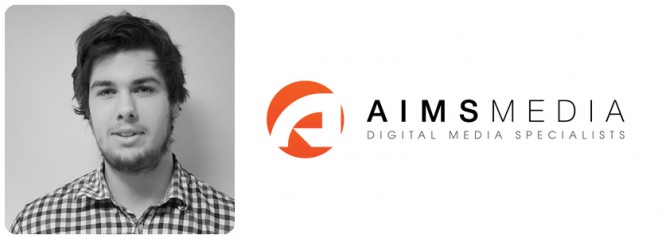
Sam Williamson, SEO Executive at AIMS MEDIA shares with us his thoughts.
“It might be late in the year, but I think the best advertising campaign of 2016 might be the adverts that Barbie have released for Christmas. After watching it, I immediately went online to find out more. Barbie have had a tough time in recent years, but it's great to see that they're trying to adapt to a modern (and less sexist) audience, hopefully these new adverts help them make the transition. Essentially they show a young girl playing with a Barbie doll, but instead of pretending that she is shopping or getting her hair done, the girl is pretending that Barbie is a lecturer. Simple but effective.”
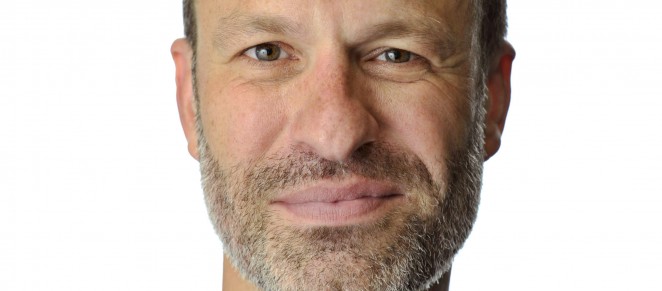
Jon Wadelton, CTO at The Foundry.
"This year we have started to realise the true potential of immersive content. The ability to transport consumers into entirely new scenarios has opened up the floor to far more emotive campaigns. We recently worked alongside Italian production house, Radical Plans, to create ‘No Borders’, a 360° video documentary that follows the current refugee crisis in Europe. The documentary placed viewers in the thick of a situation that they otherwise might never have been able to experience – all through a VR headset. The transportation to a virtual environment in a documentary-style format helps build empathy like no other media can. Using digital content in this way can open up a real breadth of opportunities for the not-for-profit sector. VR and 360° video are making the incomprehensible far more tangible to the public, and we are only just beginning to see the ways in which brands and campaigns can utilise this."
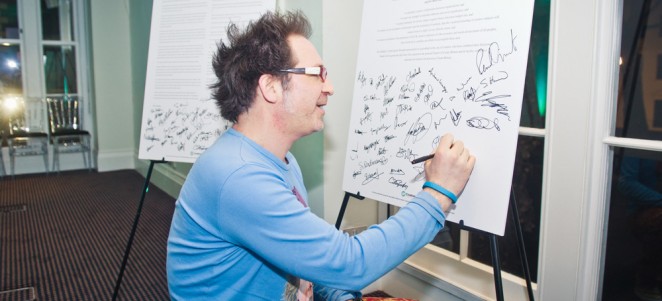
Marc Lewis, is an award-winning innovator and dean of the Brixton School of Communication Arts (SCA). He was credited with inventing the first ever video banner ad in the mis 1990s!
With digital slowly taking over, are there any campaigns you feel helped bridge the gap between traditional campaign work and more forward-thinking digital content?
“My favourite digital campaign of the year was an extracurricular project by one of my alumni, Frazer Price, now at Droga5. It was called Dumb Blond Fucks 15 Million People At Once. Frazer made me a very proud dean. At School of Communication Arts, we teach that our mission is to permeate culture. Get people talking about our work. For example we recently launched ICE (In Case of Emergency) a pioneering personal security device that lets users – at a touch of a button – send a distress signal to emergency services friends and fellow ICE via crowdfunding. This device was collectively designed by the students I teach and has made a big splash in the U.K press and raised over £43,000 in funding. This is the kind of gritty products and news stories we are working on as a school.”
What do you think of the great ‘VR’ push of 2016? Are you for or against it? And do you see it having even more of an impact next year?
“I think that we should think about Gartner’s Hype Curve. My sense is that we are just at the start of the Slope of Enlightenment. When I can slip on a pair of glasses, sit and watch a live Arsenal game next to Thierry Henry and my mates, the technology will enter Plateau of Productivity.”
Christmas ads seem to have been given even more of a push this year. Which, if any, were your favourites? And do you think their popularity proves that televised ads will always have a place?
“The Christmas star shines a light on ad land and it shows how diseased our industry has become, that we compare Christmas advertising to US Superbowl. All the ads look, more or less, the same as each other, and the same as last year’s. Superbowl is in a different league! None of the Christmas ads made me feel as excited as the Channel 4 Paralympic ads. Not even close. The brilliance of those 4 Creative commercials demonstrates that TV will always have a place. It just needs bigger thinking – ideally from SCA trained alumni.”.
What trends have you noticed personally in advertising this year? And which of these trends have you been in favour of or against?
“My role running the school means that I get to see how things are across over a hundred agencies, and I’ve noticed two trends that concern me; (i) Everyone seems to be busier than ever, with limited capacity and growing demands, (ii) Global uncertainty has led many agencies into strategies of consolidating, and investing in the future is one of the easiest things to cut from the balance sheet.”

Katherina Tudball, Design Director at The Partners.
“This year I loved Kenzo World for all the obvious reasons. As an experience it’s a joyful bundle of strange, noisy escapism. As a perfume ad it moves things on in the right direction. It’s so delightful, unexpected and genre-busting to see a woman in this context with a personality that goes beyond sexual allure. This woman is bored, frustrated, weird, funny, wild and strong. She’s doing her own bizarre thing and crucially she doesn’t seem to be doing it for the boys. Brilliant, beautifully done and important right now. It’s a shame that in 2016 seeing something like this still feels like such a lovely anomaly.”

Iain Hunter, Executive Creative Director at STACK.
“Make no bones about it - Sports brands are the marketing heavyweights. Budgets are huge. The ambassadors wage demands are even bigger. And I suspect that the egos are bigger still. On top of that, kids will decide whether you’re cool or not – a terrifying prospect for any marketer. Which is why I really like what Adidas are doing. It started with #HATERS, then BOSS EVERYONE and now NEVER FOLLOW by iris Worldwide and shows that this is a brand that really understands their content, who it’s for, and how it’s imbibed. The results are fast, funny and fresh – and have that feel of being put together by an undiscovered fifteen-year-old genius in their bedroom with an iPhone. And you know you’re onto something when the players look like they’re enjoying themselves rather than awkwardly trying to remember their lines. So for my money, Campaign of 2016 is Adidas – great strategy, lovely craft and a brave a client. Sounds so easy when you put it like that.”

Tim Jones, Creative Director at RPM.
“For the best advertising campaigns of 2016 I can’t really see passed AMV BBDO’s MALTESERS work focused on the lighter moments in the lives of those living with a disability. For me, this is what TV advertising should be used for: big brave statements, by big trusted brands, that resonate with society and trigger meaningful conversations and behaviour change. As always with AMV BBDO, the adverts are well made and well written, but proper recognition must go to the decision makers at Mars. Not only have they defined a purpose-driven brand idea that is bigger than a mere promotional line, they also have the conviction to behave bravely against it. If only more big brands would do the same. Christmas hats off to Channel 4 too – it was their £1m Superhumans Wanted competition that created the opportunity in the first place. Lovely stuff.”

Victoria Ward, Digital Marketing Manager at SPEED.
With digital slowly taking over, are there any campaigns you feel really helped bridge the gap between traditional campaign work and more forward-thinking digital content?
“There were many campaigns this year that has really bridge the gap between traditional and more forward thinking digital content. But one where Speed personally worked on was the Great War Peterborough campaign. Speed were commissioned to design and develop a unique website that showcases and digitises two surviving Peterborough based guestbooks, making them accessible to the public for the first time. Highlighting the city’s importance as a railway hub during the First World War, we explored the wider story of the servicemen and developed the website look and feel to fit in with the era. Volunteers transcribed the guestbooks so the entries were automatically animated. The website enabled the public to research and explore the servicemen. This lent itself to an intimate and informative site maximising the experience for the end user, enhancing not only the history of Peterborough, but also wartime Britain and the emotional stories. The digital guestbook was also presented on screen at the Peterborough train station using a Raspberry Pi, a low-powered programmable computer. The campaign received national coverage featuring on BBC, ITV news, The Guardian and Sky news. Therefore, was a crossover between digital and traditional.”
What do you think of the great ‘VR’ push of 2016? Are you for or against it? And do you see it having even more of an impact next year?
“Despite the fact that VR has been around for many years, people still think it’s a new concept that has just emerged. The growth of VR recently was matched by a growth in public expectations which then created excitement of the abilities VR could do. I personally am for VR, since it is a great way to engage with people in the content you want them to see. As the headset is completely immersed in the content, this mean there are fewer distractions and more attention to the message. For example, you can create real impact in generating strong emotions since you are “in the experience”, something that traditional media find hard to achieve. VR will definitely have more impact next year in several sectors as more people realise its potential. You can already see its usage in various industries from Boursin – a soft cheese supplier who used a virtual reality experience that takes you on a journey through a fridge full of their treats. Or even Michelle Obama’s video on her success in social media who uses VR in the video which makes use of the 360 space. Even doctors are using 'distraction therapy' through virtual reality to help people handle pain while they undergo treatments such as physical therapy. The ability target customers through a strong emotional connection and visuals creates exciting opportunities.”
Christmas ads seem to have been given even more of a push this year. Which, if any, were your favourites? And do you think their popularity proves that televised ads will always have a place?
“There are so many Christmas ads this year and one of our favourites has to be Heathrow’s advert with the two bears as it created a buzz with families and friends reuniting for this special time of year. Although some saw this ad on TV, some saw this online, which link to the fact that people are viewing the ad across multiple platforms. As more marketers talk about the rise of digital, traditional channels are left behind in terms of attention they attract, however, TV still remains the king of media in terms of ad spend. Televised ads will always have a place as long as they align themselves with existing and digital trends. Many companies now sync their campaigns across TV and online to create impact, as well as engaging their consumers across a growing number of channels. For example, think of a time when you saw a TV advert that you liked. Did you talk to them about it? or did you send an online link for them to check out the ad? Increasingly, TV and digital are tying up together.”
What trends have you noticed personally in advertising this year? And which of these trends have you been in favour of or against?
“A trend that has seems to emerged in advertising is the multiple purchase points. Buying opportunities are everywhere these days, especially for online ads, where social media platforms have adopted some kind of in-app shopping or in-app checkout for products advertisers are paying to display. Google shopping is also becoming more prominent and more conveniently integrated with the search experience as well. This seems to be in favour, rather than against issue since it gives customers an easier experience for making purchases, as well as giving marketers more opportunities to create conversions.”

Sergio Lopez, Head of Integrated Production at McCann Worldgroup EMEA.
“Do I like the Under Armour campaign with Michael Phelps and Dougal’s latest 'Superhumans'? Sure; but then 2016 has been a strange and confusing year. That’s why, for my campaign of 2016, I’m going to go for more complicated multi-channel, social, engaging, (add buzzword du jour) campaigns. It would be quite rude of me to blow my own trumpet, so I won’t, but McCann New York’s 'Mars Bus' and London’s own 'Survival Billboard' have become the gold standard of what the convergence of technology and creativity should look like. In an effort to redeem myself from the previous paragraph I’m going to choose the Target 2016 Grammy project with Gwen Stefani. I’ve seen live commercials before, but what made this one special was that it looked great, it was a brilliant integration of TV with second screen and worked in many levels. This year’s guilty pleasure for me is still Kenzo’s 'Mutant Brain'. Beautiful. Bizarre. Baffling. Just like 2016.”
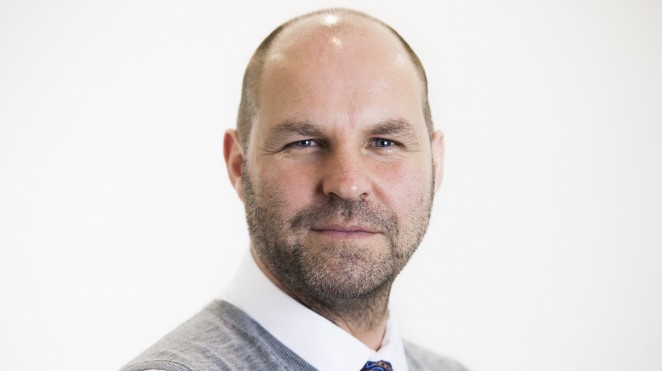
Mike Kettles, Executive Creative Director at Momentum Worldwide.
“One of the stand out campaigns for me in 2016 was “We're The Superhumans” that Channel 4 created to launch their coverage of the Rio Paralympics. I listened recently to the inspirational Sir Philip Craven presenting his Desert Island Discs and realised just how powerful the ‘yes, I can’ spirit is that sits behind this piece of work. The positivity of the message and the style of the content packs a real punch for me.”
Eira Ellis, Head of Primary & Agency Production at Hogarth Worldwide.
“I enjoyed the Lidl Turkey ad by TBWA – it quickly cuts to the message that they are responding to an online negative message, and that they asked the lady to come and work on their farm and experience the environment their turkeys are raised in. It feels genuine and amusing without being “told you so!’. It tells us a story we all can relate to. The execution is believable and not contrived, using a lady who feels outside their usual market, therefore extending their appeal.”

Brendán Murphy, Senior Design Partner at Lippincott.
With digital slowly taking over, are there any advertising campaigns you feel really helped bridge the gap between traditional campaign work and more forward-thinking digital content?
“The GE recruitment campaign is a great example of positioning the business as digital first while at the same attracting the digital talent it needs to redefine its business. The campaign married wonderful storytelling with the geeky humour from The Big Bang Theory to bridge the generation gap. Also, while not a formal ad campaign, Samsung’s digital tunnel at its 837 concept store in New York is an interesting marriage of your private and public self, as it scrapes your Instagram account to surround you in a world of your own social content.”
What trends have you noticed personally this year? And which of these trends have you been in favour of or against?
“The rise of AI through digital concierges like Siri, Alexi and Google Home will redefine our relationships with brands. With the shift from visual to auditory, and personal to bots, we’re also seeing a greater emphasis on brand personality, beyond the advertising headline and tagline, to every level of the brand experience. Great examples of this are Apple and Google who and not only programming the vast databases to answer your questions and learn from you, but also employing writers to build in a little sass and humour to surprise you every once in a while and connect emotionally.”

Mark Holden, Head of Strategy at Arena Media
“As much as it pains me to admit it, Vote Leave was the most effective advertising campaign this year. It achieved something that most advertising never does, by significantly shaping opinion and behaviour in a relatively short window of ‘official’ campaigning. At face value it may not appear to be the most sophisticated, but it did a few things very well. To start with, ‘Take Back Control’ was a simple and powerful central thought, consistently delivered. It framed ‘leave’ as a more positive decision against the alternative, broad enough for people to apply their own interpretation and meaning to. Vote Leave also did a more effective job at delivering this message, at both a grassroots and national campaign level. Their messages became the iconic reference points during the campaign, whatever we might say now about the integrity of the ‘£350m’ claim. Anyone who took a trip outside of London during the campaign would have seen this first hand. In fact, if there’s one lesson to take from it, it’s that we have to do more to pull ourselves out of London agency land and understand the UK as it is, not as we want it to be."
Benjamin Hiorns is a freelance writer and struggling musician from Kidderminster in the UK.

